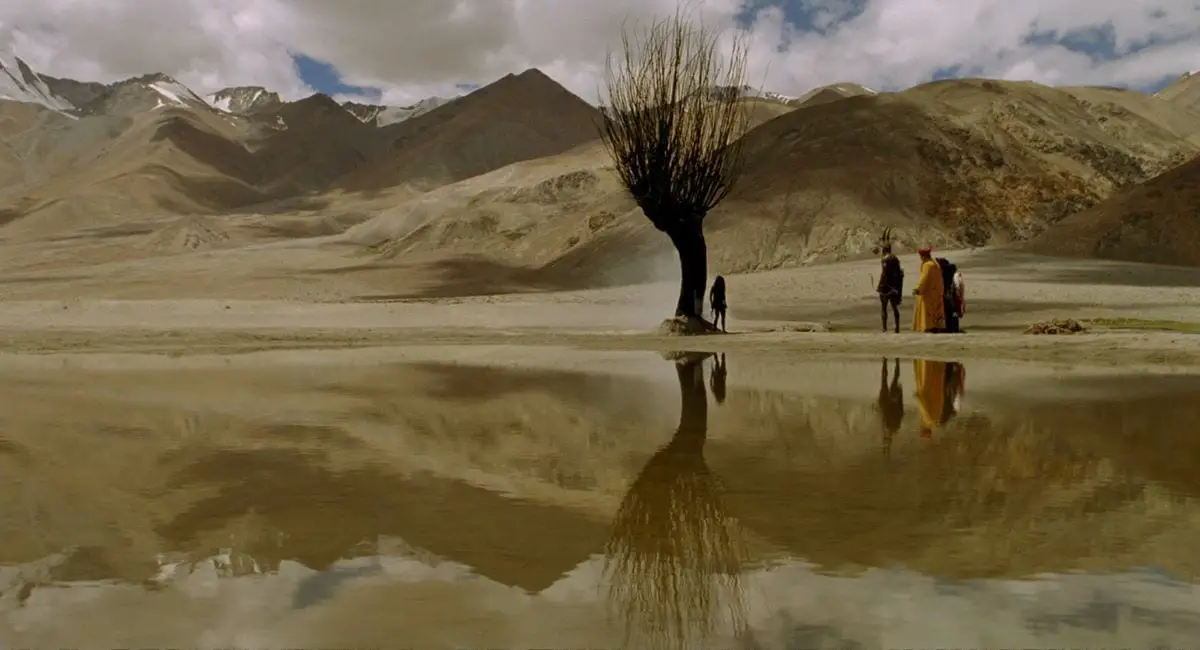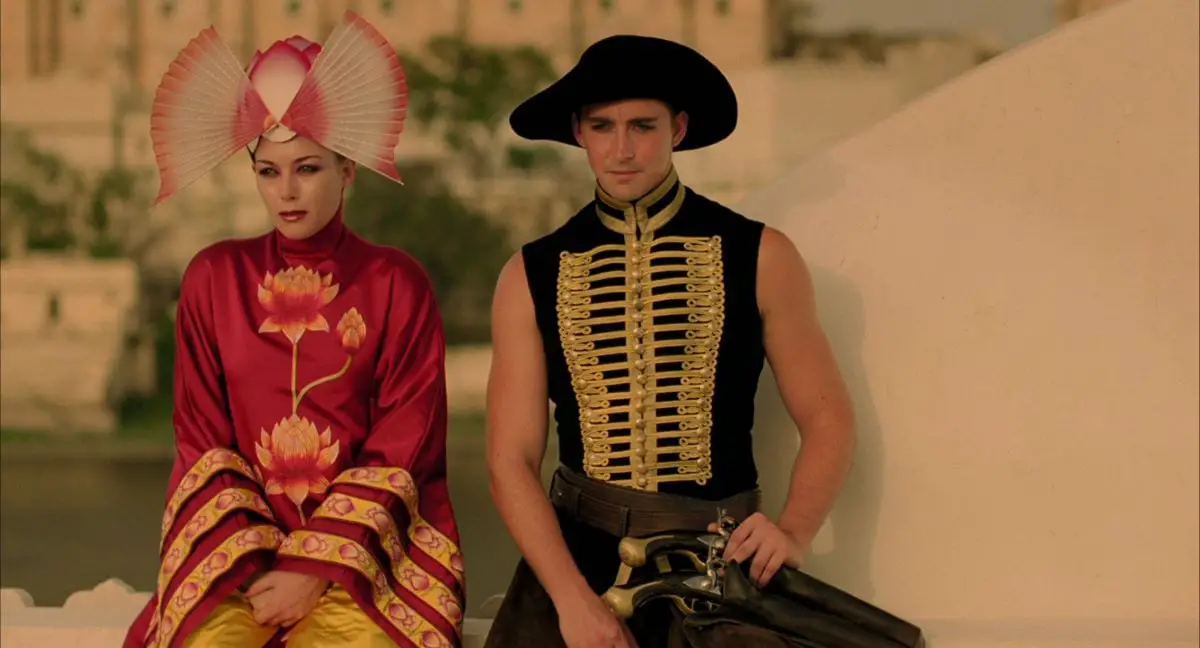If there was one thing that became apparent during the recent troubles that affected the world, it was that the need for escapist entertainment has never been greater. As soon as the lockdown was announced, people appetites for stories that took them away from current grim realities went through the roofs we were all confined under. It was not just people’s appetites for movies and bingeable TV either; video game sales went up and, I haven’t seen figures, but a lot more people seemed to be reading books or actually writing them than ever before.
The need to consume entertainment—or actually make it—is nothing new when faced with dire global situations. Some of the best art of recent times was created in the aftermath of 9/11 as people channeled their anger and fear into making great works of art. In the aftermath of COVID-19 and the very real failure of the systems we rely on to protect us, we are more than likely to see some classic work produced. On a more human and intimate level, since time began we have told stories to try and heal from heartbreak and grief. There is always a degree of printing the legend over the truth, but its a very human reaction when faced with the worst things that can happen to a person. This is why I feel that in these current times, the largely forgotten 2008 film The Fall is very important.

Around about the turn of the century, the director Tarsem Singh or “Tarsem” as he is often monikered, got lumped into a despised category of film directors who were more flash than substance that included Michael Bay (Armageddon, 1998), McG (Charlies Angels, 2000) and Paul WS Anderson (Event Horizon, 1997). You probably know Tarsem’s work from the seminal music video for R.E.M’s “Losing my Religion”, or a haunting Dunlop tires commercial from around the same time. The reason for this pigeonholing was thanks to the Jennifer Lopez serial killer vehicle The Cell (2000). This film was one of the worst reviewed films of the year it came out, with critics deriding its style over substance mantra, and was further fuel to the fire of taking down the soon-to-be-overexposed J-Lo of the period.
Now The Cell actually isn’t that bad, it’s actually something I enjoy going back to every now and then. The visuals are simply incredible, and the serial killer and his pathology lend the film a certain weight that few horror films of the time were capable of. It was a case of critics largely missing the point as the visuals actually tell the story, the heartbreaking story of a diseased mind produced by years of abuse, and what it is like to be trapped there. It feels like the film was misunderstood as most people saw a separation between the two facets of the film (story and visuals) and thus dismissed it as shallow.
It’s fair to say that fans of plot-driven driven entertainment were not chomping at the bit for Tarsem’s follow up film. The film bloggerati were no doubt sharpening their knives waiting for another empty spectacle, and sound and fury signifying nothing. A brief flirtation with DC comics Constantine was on the cards for a while, but Tarsem’s follow up was actually fairly quiet and understated. Whilst it is true that The Fall is just as visually stunning, if not more so than The Cell, it actually has something much deeper and universal operating at its core.

The film opens sometime early in the 20th century which we later learn is the dawn of the silent movie era. We are shown in typically visually stunning fashion, the black and white overview of a film set in recovery from some kind of accident. We then move the remainder of the story to a hospital in California. Here we meet young Alexandria (Cantica Untaru) who has a broken arm and spends her days bored and mostly alone exploring the hospital grounds and letting her imagination run wild. Alexandria is drawn to Roy (Lee Pace) a Hollywood stunt man who has recently been paralyzed when a stunt went bad.
With both parties introduced to each other through their mutual boredom, Roy begins to recount a story about a group of five outlaws—a masked bandit, a shaman, an explosives expert, a former slave, Charles Darwin, and a bereaved Indian warrior—who are all united to take down the villainous Governor Odious who has destroyed their lives. Through the telling of the story, truths are revealed, reality intrudes, and both Roy and Alexandria come to terms with the sadness that led them to where they are.
Using real-world locations, and a refreshing lack of CGI and green screen, Tarsem Singh makes the imaginary quest visualizations of the story soar in a way few directors working with more tools at their disposal actually manage. This combined with the excellent costume work by the late Eiko Ishioka transport you to another world. The imagery is obviously very strong, and Tarsem provides certain moments that linger long in the memory. Elephants swimming in the sea, a curtain suddenly stained red in a desert, and a chandelier made from dead bodies all stand out, as do the moments where the film moves to disturbing stop motion or a sudden painful fall from a horse, indicating that there is still a frightening reality outside of the fantasy.
What stays with you after viewing The Fall is the actual skill with which this story within a story is told, and the many layers present in the script. The Fall takes place at the birth of the motion picture, and this is entirely intentional, it represents a time when the way in which stories were told was changed forever. The film tells a small story on a grand scale at a time when the floodgates were opened for different kinds of storytelling, now limited only by artists’ imaginations. One of the first images we see is of a bedridden child making shapes with his hands and entertaining himself, its fairly on the nose, but it gives you an indication of what you are about to see.
When faced with heartbreak or tragedy, people tend to move away from the reality of a situation pretty quickly, as its often too painful. Nobody wants to believe that they were left for a better option as its not good for the sense of self-worth, and so the human mind is quick to rationalize and go on flights of fancy to make the brutal reality of betrayal a lot gentler. Roy is a man who, although it is never made entirely clear, has had his heart broke, and has been left for a movie star that he was the stunt double for. In the aftermath, Roy performed a dangerous kind of stunt in an attempt to impress the one he lost, and he has now ended up without the use of his legs in hospital.
This reality slowly creeps into the story, along with Alexandria’s attempts to lighten the tone whenever things seem to be getting too real. A love interest is introduced who is later revealed to be a deceitful and shallow character, an avatar for the person that Roy thought he knew in the real world. When Roy realizes how invested Alexandria is in the story he uses this to his advantage. He makes the despicable decision to emotionally blackmail the child into bringing him enough morphine so that he can take his own life. We as an audience see the awful reality of this unfolding, but the child is oblivious and is so invested in the fantasy that she does not know the real-world tragedy that has driven Roy to this point.
The suicide attempt does not work, due to the pills being placebos to placate a hypochondriac (more stories within the story). So finally admitting he is broken. Roy’s story takes on a more tragic and realistic edge. His character defects bleed into the story as he tries to demonstrate to the innocent child that happy endings do not exist. It is only when Alexandria’s own tragedy and need for a father figure also bleed through, that Roy’s nihilistic quest is ended, and an understanding and acceptance are reached.

If you excuse the pun, The Fall would completely fall apart if it were not for the two lead performances. Cantica Untaru gives such a natural child performance that it almost feels like she was completely unaware there were ever cameras around and was just presented with characters and situations to interact with. This brings us to Lee Pace, an actor who feels like Hollywood has never quite had a grip on what to do with. Pace started off as a charming romantic lead in TV shows such as Pushing Daisies and had a real everyman quality to him despite being devastatingly handsome. He never really caught on as a romantic lead, and then seemed to fall into a Hollywood go-to guy for villains in blockbusters or shady anti-heroes. He has been massively underrated in the brilliant Halt and Catch Fire on TV, and the recent Driven (2019) where he played John DeLorean. The Fall is an excellent reminder of what he was capable of in those early days, playing the fallen hero with a certain edge brilliantly, and always remaining sympathetic despite some dubious actions.
Shot over a period of four years, The Fall didn’t make much of an impression when it was eventually released in 2008. Although it got much better reviews than The Cell, directors Spike Jonze and David Fincher had to lend their names to the production in order to get it some kind of release. It never had wide distribution, but perhaps its emergence on home viewing formats around the same time as Blu-Ray, bringing HD quality into living rooms helped gain it a small but devoted following. It is certainly—even twelve years later—a stunning film to look at, but one that reveals the hidden depth and meaning the more you watch it. It is a film where the craft and dedication to a personal vision are all up there on the screen. Tarsem would go on to make Immortals (2011) Mirror Mirror (2012) and Self/Less (2015) films which gradually became less well crafted, and more cookie-cutter in terms of visuals and subject matter.
I know that in my own life, I have been writing something for around twenty years at this point that is all about death, loss, and how we cope with grief. I may never do anything with it once it is finished, but every time tragedy strikes, I go back to it and work on it a little more until the grief becomes easier to live with. The final frames of The Fall show Roy and Alexandria enjoying a silent movie, one which has been edited to show that Roy jumped from the bridge and landed on the horse successfully. This isn’t reality, this is the edited version of that reality, as part of a story, another escape. This is why The Fall hits me on a personal level, and ultimately what remains with you after is the power of storytelling as a means to process pain. Stories often become bigger than the storyteller, just look at how George Lucas’ creation of a galaxy far far away got away from him. The Fall is a film that underlines the very human need for escape, its importance, and on a deeper level how we deal with disappointment and tragedy in the best possible way we can.


